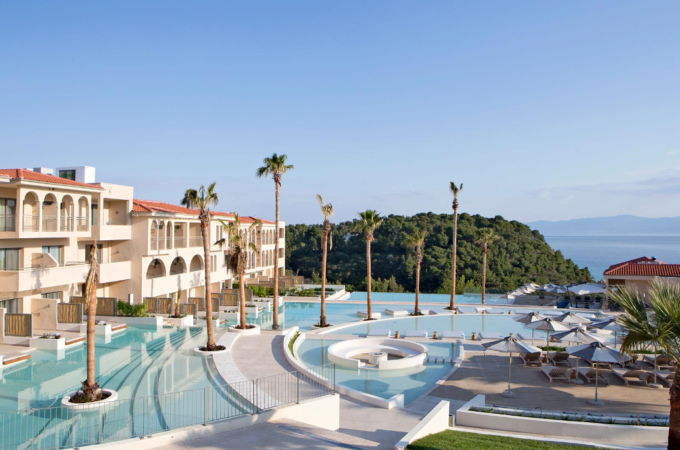
Five Must-See Historical Sights in Ireland
Ireland is often overlooked as a travel destination, and especially so by Americans. Those who have Irish blood in their ancestry consider visiting the Emerald Isle to be something of a pilgrimage, but those who don’t are more likely to be seduced by the plethora of well-known tourist attractions in neighboring England and Scotland, or even by continental Europe. That’s a shame, because Ireland has plenty to offer visitors in its own right. It just doesn’t make as much noise about it. If you are planning on touring the Ring of Kerry, make sure to stop by Killarney.
There’s more to Ireland than just bars and dancing. The country has, possibly because of the international celebration of St. Patrick’s Day, acquired some fairly heavy stereotypes. The Irish are usually portrayed as heavy drinkers, and the land as either pubs and bars or green hills. One of the most popular slot games in the world, Rainbow Riches, makes Irish stereotypes its calling card. The online slot is full of leprechauns, pots of gold and rainbows, with horseshoes and other symbols which tie into Irish myth and folklore. Those legends have appeal – and if they didn’t the slot game wouldn’t be as widely-played as it is – but it would be simplistic to say that there isn’t more to Irish culture or Irish scenery. You’ll find as many leprechaun-themed items in the tourist-heavy areas as you do in Rainbow Riches, but off the beaten track there is outstanding natural beauty to see, if only you know where to find it.
Finding it shouldn’t be an issue, though. Ireland is comparatively small, and easy to travel across. If you have a week or so to spare, and you can stick to a tight travel schedule, you can take it all in. You could spend your entire vacation in Dublin if you wished – there’s no shortage of things to do in the thriving city, even if it Is one of the most expensive cities in the world to live in. If you really want to see Ireland, though, we’ve got the best destinations right here for you in this list.
The Ring of Kerry

If we talked about beaches in Europe, you’d probably picture Spain or Portugal, and you’d think about several other countries before you got around to Ireland. That’s because not enough people are familiar with the Ring of Kerry, which has some of the cleanest and most idyllic beaches in the whole world.
The circular ring runs through various territories and takes three hours if you don’t stop off on the way, but most people make a day of it, and start out from Kenmare. The land around the ring is broken up by not only beaches but tiny land islands, awe-inspiring mountains and unrivaled views across the Atlantic Ocean. There’s history here too; the ruins of Iron Age settlements can be explored, and you can try to solve the mystery of the ancient Ogham Stones.
The Rock of Cashel

If a tourist attraction is good enough for the Queen of England, then it’s good enough for you. Her Majesty surveyed the site by helicopter in 2011, but the best way to see it is up-close and in person, so we recommend visiting on foot. The site may be called a ‘rock,’ but that’s only because of the distinctive limestone that serves as a foundation. Sitting on that rock is a series of buildings which date back as far as the 12th century.
As you expect with old buildings, some are in better condition than others, but the Gothic cathedral is probably the highlight, dating back to the 13th century and almost as imposing now as it must have been then. Legend says that the Kings of Munster once ruled their land from here, before the Normans drove them away.
The Blarney Stone

We accept that the Blarney Stone is as much a part of the Irish national stereotype as the leprechauns and the pots of gold, but the famous stone in Blarney Castle is still the most popular tourist destination in Ireland, and it would be wrong not to include it on our list. The castle, which is close to Cork and houses the famous stone, is well over six hundred years old, and open to explorers all year. That includes the dungeons and all of their grisly secrets.
It’s the stone that most people come to see, though, and if you’re going to see it, you may as well kiss it. If you’ve ever wondered why people kiss a lump of old rock, it’s because doing so is said to give one the ‘gift of the gab,’ an Irish expression meaning the ability to persuade people with words.
The Aran Islands

Why do you go on vacation? Is it just to see the sights while remaining as close to your own culture as possible, or do you prefer to immerse yourself in the culture of the country you’re visiting? If it’s the latter, you won’t find a better place in Ireland to do it than the Aran Islands. Separated from the Irish mainlands by water, they’re almost a country within a country, seemingly unaffected by the passing of the past couple of centuries.
Gaelic, Ireland’s mother tongue, is spoken more commonly among the 12,000 residents of the islands than English is, although most locals are bi-lingual. Making the short trip across the water is worth it just to see the cliffs, but heading onto land you’ll find stone forts and relics and remnants of the ancient past. The Arans offer the best window you’ll find into what Irish life was like during the time of our forefathers, almost like a living museum.
Kilmainham Gaol

It’s not often that a former prison is recommended as a tourist destination, but we have to make an exception for Dublin’s most notorious former prison. Featured in a hundred folk songs and even more poetry of the 1800s, this is a reminder of the darker periods of Ireland’s history. Much like visiting Auschwitz, the purpose of seeing Kilmainham is not for entertainment, but to experience a greater understanding of humanity. Once seen, Kilmainham will stay with you forever.
For those completely unfamiliar, the jailhouse is enormous, and once housed hundreds of prisoners at any one time, ranging from murderers to people who’d simply been too poor to pay for a train ticket. It was at Kilmainham that the participants of the uprising in 1916 were imprisoned and then executed in the famous prison yard. The yard is open to visitors, as are the cells and the basic facilities. It won’t put a smile on your face, but that isn’t its purpose.




